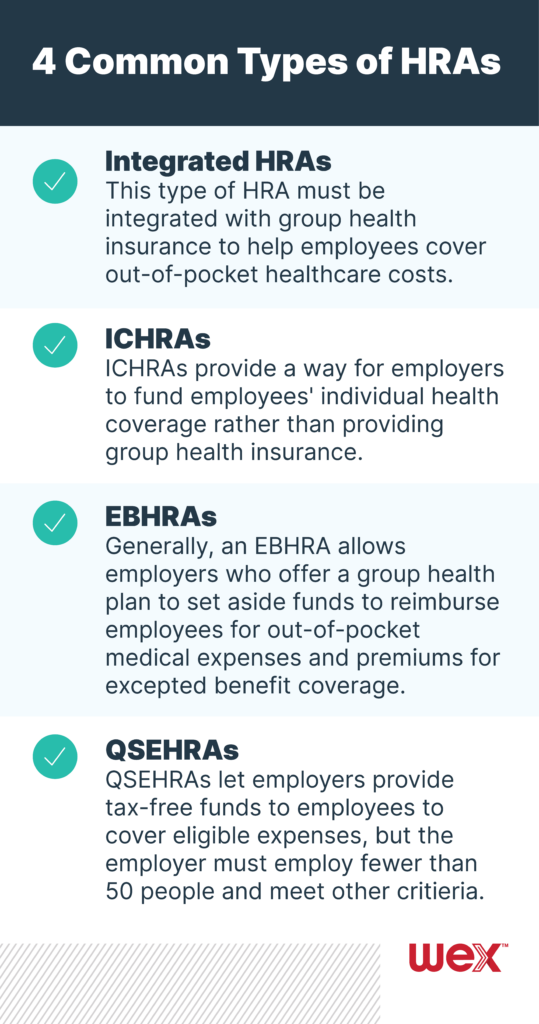Stay connected
Subscribe to our Inside WEX blog and follow us on social media for the insider view on everything WEX, from payments innovation to what it means to be a WEXer.

Health reimbursement arrangements (HRAs) offer perks, including tax advantages for both employers and employees, flexibility in covering a wide range of medical expenses, and opportunities for employers to customize an HRA that fits the unique needs of their employees. But there are HRA rules and regulations you and your employees need to follow to stay compliant. Keep reading to learn more about HRA compliance topics related to four common types of HRAs.
Eligibility rules vary based on the specific type of HRA, but employers determine who they’d like to be eligible for their HRA. For example, you might limit HRA eligibility to just full-time employees or may establish a minimum length of employment before employees are eligible for the HRA.
Integrated HRA: Since this type of HRA must be integrated with group health insurance to help employees cover out-of-pocket healthcare costs, employees are only eligible to enroll in an integrated HRA when they’re enrolled in group health insurance.
ICHRA: To participate in an ICHRA, employees need to enroll in an individual health insurance plan. ICHRAs can’t be offered with group health insurance to the same group of employees.
EBHRA: Eligible employees for an EBHRA must have been offered a group health plan by their employer, but they are eligible to participate whether or not they’ve enrolled in the group health plan.
QSEHRA: This type of HRA is only available to companies with fewer than 50 employees and can’t be offered if you also provide a group health plan.
HRA contribution limits are typically set by the employer, based on your overall budget and benefits package. But some HRAs do have limits set by the IRS, such as EBHRAs and QSEHRAs. For 2024 plan years, an EBHRA allows employers to set aside up to $2,100 per year per employee. And for QSEHRAs in 2024, small businesses may offer up to $6,150 per self-only employee and up to $12,450 per employee with a family.
Since HRAs are employer-funded, employees do not typically make contributions to these accounts. Instead, it’s the employer’s responsibility to contribute to an eligible employee’s HRA.
Employers have considerable flexibility when it comes to choosing eligible expenses for their HRA. You have the authority to select your eligible expenses within the framework of IRS guidelines, making it easier for them to meet the unique needs of their workforce. HRA eligible expenses commonly include a wide range of medical services, prescription medications, and preventive care, providing employees with reimbursement for qualified health-related costs.
When designing an HRA for your company, keep simplicity and education top of mind for your employees. Create a clear communication strategy about your HRA, providing employees with easy-to-understand materials that explain the purpose, benefits, eligible expenses, and reimbursement process of the HRA. Also, consider offering a mobile app for easy navigation and submitting expenses, and automate processes where possible to minimize administrative hurdles. By prioritizing simplicity and clear communication, your employees will feel empowered to effectively manage their healthcare expenses through your HRA plan.

Learn more about HRAs and other employee benefits by subscribing to our blog!
The information in this blog post is for educational purposes only. It is not legal or tax advice. For legal or tax advice, you should consult your own legal counsel, tax and investment advisers.
WEX receives compensation from some of the merchants identified in its blog posts. By linking to these products, WEX is not endorsing these products.
Subscribe to our Inside WEX blog and follow us on social media for the insider view on everything WEX, from payments innovation to what it means to be a WEXer.